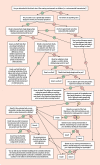Nurture might be nature: cautionary tales and proposed solutions
- PMID: 33420086
- PMCID: PMC7794571
- DOI: 10.1038/s41539-020-00079-z
Nurture might be nature: cautionary tales and proposed solutions
Abstract
Across a wide range of studies, researchers often conclude that the home environment and children's outcomes are causally linked. In contrast, behavioral genetic studies show that parents influence their children by providing them with both environment and genes, meaning the environment that parents provide should not be considered in the absence of genetic influences, because that can lead to erroneous conclusions on causation. This article seeks to provide behavioral scientists with a synopsis of numerous methods to estimate the direct effect of the environment, controlling for the potential of genetic confounding. Ideally, using genetically sensitive designs can fully disentangle this genetic confound, but these require specialized samples. In the near future, researchers will likely have access to measured DNA variants (summarized in a polygenic scores), which could serve as a partial genetic control, but that is currently not an option that is ideal or widely available. We also propose a work around for when genetically sensitive data are not readily available: the Familial Control Method. In this method, one measures the same trait in the parents as the child, and the parents' trait is then used as a covariate (e.g., a genetic proxy). When these options are all not possible, we plead with our colleagues to clearly mention genetic confound as a limitation, and to be cautious with any environmental causal statements which could lead to unnecessary parent blaming.
Conflict of interest statement
The authors declare no competing interests.
Figures









Similar articles
-
Family environmental factors influencing the developing behavioral controls of food intake and childhood overweight.Pediatr Clin North Am. 2001 Aug;48(4):893-907. doi: 10.1016/s0031-3955(05)70347-3. Pediatr Clin North Am. 2001. PMID: 11494642 Review.
-
How important are parents in the development of child anxiety and depression? A genomic analysis of parent-offspring trios in the Norwegian Mother Father and Child Cohort Study (MoBa).BMC Med. 2020 Oct 27;18(1):284. doi: 10.1186/s12916-020-01760-1. BMC Med. 2020. PMID: 33106172 Free PMC article.
-
The estimation of environmental and genetic parental influences.Dev Psychopathol. 2022 Dec;34(5):1876-1886. doi: 10.1017/S0954579422000761. Epub 2022 Dec 16. Dev Psychopathol. 2022. PMID: 36524242 Free PMC article.
-
Parent-mediated interventions for promoting communication and language development in young children with Down syndrome.Cochrane Database Syst Rev. 2018 Oct 15;10(10):CD012089. doi: 10.1002/14651858.CD012089.pub2. Cochrane Database Syst Rev. 2018. PMID: 30321454 Free PMC article. Review.
-
Family pediatrics: report of the Task Force on the Family.Pediatrics. 2003 Jun;111(6 Pt 2):1541-71. Pediatrics. 2003. PMID: 12777595
Cited by
-
The relationship of school performance with self-control and grit is strongly genetic and weakly causal.NPJ Sci Learn. 2023 Dec 4;8(1):53. doi: 10.1038/s41539-023-00198-3. NPJ Sci Learn. 2023. PMID: 38049407 Free PMC article.
-
Associations Between Children's Numeracy Competencies, Mothers' and Fathers' Mathematical Beliefs, and Numeracy Activities at Home.Front Psychol. 2022 Apr 14;13:835433. doi: 10.3389/fpsyg.2022.835433. eCollection 2022. Front Psychol. 2022. PMID: 35496151 Free PMC article.
-
From mother to child: How intergenerational transfer is reflected in similarity of corticolimbic brain structure and mental health.Dev Cogn Neurosci. 2023 Dec;64:101324. doi: 10.1016/j.dcn.2023.101324. Epub 2023 Nov 11. Dev Cogn Neurosci. 2023. PMID: 37979300 Free PMC article.
-
Developmental cascades from maternal depressive symptoms in childhood to adolescents' friendship quality: A 13-year longitudinal study.Dev Psychol. 2025 Aug;61(8):1531-1546. doi: 10.1037/dev0001834. Epub 2024 Sep 26. Dev Psychol. 2025. PMID: 39325389
-
Schooling substantially improves intelligence, but neither lessens nor widens the impacts of socioeconomics and genetics.NPJ Sci Learn. 2022 Dec 15;7(1):33. doi: 10.1038/s41539-022-00148-5. NPJ Sci Learn. 2022. PMID: 36522329 Free PMC article.
References
-
- Turkheimer E. Three laws of behavior genetics and what they mean. Curr. Dir. Psychol. Sci. 2000;9:160–164. doi: 10.1111/1467-8721.00084. - DOI
Publication types
Grants and funding
LinkOut - more resources
Full Text Sources
Other Literature Sources

